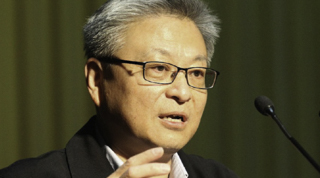This is the first in our series of cp.signals tracking developments in the BRI including digitisation, agriculture.
The digital layer of BRI is rapidly strengthening as state and market interests converge; expect support from the 14th 5-year plan
Beijing’s Belt and Road Initiative (BRI) excites the developing world with its promise of connectivity and ready funding. Post-COVID, the gloss is off but not the momentum; and each of BRI’s multiple ‘tails’ seems bent on wagging the dog. Beijing is due to host the third biennial BRI Forum for International Cooperation in H1 2021; a series of cp.signals will analyse emerging BRI trends. We begin this week with the ‘digital silk road’ (DSR).
Viable and profit-driven, the DSR covers all things digital along the virtual path of BRI: digital economy, e-commerce, IT infrastructure, smart cities and more. The 14th 5-year plan is sure to deliver more policy support, above all in digital trade, data rules and urging third-party buy-in.
connecting the world
Local and ministerial DSR proposals first emerged in 2014, but the initiative really gained traction only in May 2017, when Chairman Xi Jinping highlighted it at the inaugural BRI Forum. Xi pledged connectivity and cooperation across the digital economy, emerging technology and smart cities. 'Going Global' may have been on the agenda since 2002, yet firms and state agencies sprang to offer new DSR businesses or programs (or reframe existing ones).
Beijing has been reticent about DSR specifics. Linking cross-border infrastructure, like submarine internet cables, was highlighted initially; but all digital initiatives are on the table. Exporting ‘China Solutions’ in digital trade and economy is the focus, claims Wang Bingnan 王炳南 Vice Minister of Commerce. Beijing looks to the tech giants that transformed the domestic economy in the last two decades, to gain traction abroad and bake in PRC technologies and standards.
Since 2015, some 17 states have joined the initiative, with at least 33 more (or their subnational governments) signing relevant agreements with China. Multilateral and regional organisations, not least ASEAN, have become major platforms through which collaboration is formalised.

state and business on the same road
Converging state and market interests propel the initiative. Policymakers have called for sustainable investment (a.k.a. supervision of overseas lending), concern for which was exacerbated by COVID-19. Considering domestic and international financial setbacks (as in disastrous infrastructure ODIs in Sri Lanka and elsewhere), DSR, just like its domestic counterpart ‘new infrastructure’, is splendidly cheap, and lower risk.
Digital infrastructure gaps across BRI partners translate into strong demand. Notably, a Huawei Kenya executive highlighted (external link) the imperative of jumpstarting local economic development in Africa via public security technology. On the supply side, tech giants have long sought overseas expansion. BRI beckons ever more as they stumble in developed markets and face monopoly investigators at home.
DSR projects hence fit within a spectrum, ranging from PRC-style development assistance to business-led market expansion. Linking BRI to other states’ digital imperatives, Beijing offers its firms inside running; Digital Kazakhstan and ASEAN Connectivity 2025 are cases in point. EXIM and other policy banks have long offered loans to underdeveloped nations, who in turn will procure products and services from companies like Huawei.
PRC enterprises are also expanding, whatever Beijing’s policy objectives, at a pace in emerging markets. Cross-border e-commerce is an example, reaching some C¥200 bn by 2019. Minor relative to overall trade, it has been forecast to account for as much as 30 percent by 2030. Alibaba has played an ever more commanding role, not least since COVID-19. States such as Rwanda, Belgium and Malaysia joined its Electronic World Trade Platform (eWTP), connecting the e-commerce markets of China and other countries.
Beidou satellite navigation system on the digital silk road
BeiDou aims to reduce reliance on US GPS. This mostly Made-in-China technology is now operational worldwide with its phase 3 now complete.
Promoting PRC technologies and standards is a major thrust of the DSR. BeiDou, one such technology, has seen some success. Sun Chanthol Cambodian Minister for Public Works and Transport announced in March 2020 that the BeiDou system will be installed in all vehicles in Cambodia.
outlook
The DSR is on a growth curve, though its impact will not be as obvious as other BRI layers. E-commerce, digital healthcare and online education will only be more relevant in a post-pandemic world. Foreign Minister Wang Yi 王毅 has touted it as a priority in future diplomacy.
Major areas to watch
- regional expansion: extending from Asia and Africa into Latin America
- digital trade: especially B2B; a digital trade strategy is in the works
- data rules and cross-border transfer: Data Security Law and data transfer rules are awaited for guidance
- supply chain security: US export controls affect Huawei and other firms' high-end products, though with little impact on most DSR programs
- third-party market cooperation: non-Chinese actors hoped to help guard BRI’s flank
Of all BRI’s tails (or layers), DSR seems most capable of wagging the dog. The need is felt ever more among Beijing officials, though they are careful not to repeat mistakes of other BRI infrastructure projects, and to address new security risks such as data transfer. Expect a slower roll-out and less pomp and circumstance, but for China’s tech giants to remain on top.
who are the experts?

Yan Xuetong 阎学通 | Tsinghua University Institute of International Relations dean
The new digital era is marked by Sino-US strategic competition, quasi-liberal IR pundit Yan points out. Digital economy is far more relevant than territorial control and international transport, outdated geopolitical holdovers from earlier waves of industrialisation. Characterised by monopoly and leapfrog development, digital economy is to be the prime source of national wealth and the main focus of Sino-US competition, says Yan. China needs a coherent strategy for digital economy that is driven by long-term innovation capabilities, and in turn cultivated by further political reforms.

Ma Wenyan 马文彦 | former China Investment Corporation managing director; New York University adjunct professor
DSR helps internationalise a ‘Chinese' approach, claims Ma: half the world’s population still live off the internet grid. Mounting connectivity along the DSR enables emerging market firms to gather basic data points that, appropriately structured, become big data on supply dynamics, price and general development direction. Existing debt trap and project management challenges can, he warns, spread to DSR, as can cybersecurity and data governance perils.

Huang Qifan 黄奇帆 | former Chongqing mayor
Cross-border e-commerce will by 2030 account, predicts veteran technocrat and respected economic commentator, for some 30-35 percent of national trade volume, conceivably 50 percent by 2035. Integrate the fragmented regulations on B2B and B2C e-commerce, he urges: pilot FTZs can be prime platforms for rolling out digital trade-friendly policies. Huang even proposes lifting the Great Fire Wall, arguing that accessing overseas data is critical for cross-border e-commerce. Access should at least be granted, says Huang, to the 37 square kilometres of Hangzhou’s pilot FTZ.
context
May 2020: Foreign Minister Wang Yi 王毅 suggests that digital silk road will be a major focus
April 2019: at the second BRI forum President Xi Jinping calls for digital silk road development; a designated digital silk road sub-forum was held
December 2017: China signed an Initiative on BRI Digital Economy Collaboration with seven countries at the World Internet Conference
May 2017: at the inaugural BRI forum President Xi Jinping for the first time calls for digital silk road development
December 2016: State Council and Ministry of Industry and IT respectively issued the 13th 5-year plans for nation informatisation as well as for the information and telecommunication industry, both of which call for domestic tech giants to expand their international footprint
July 2016: CCP Central Committee and State Council issued a National informatisation development strategy, which calls for a digital silk road that bridges internet infrastructure along BRI, and international expansion of domestic companies
March 2015: digital silk road was mentioned for the first time in a whitepaper by National Development and Reform Commission, MInistry of Foreign Affairs and Ministry of Commerce
